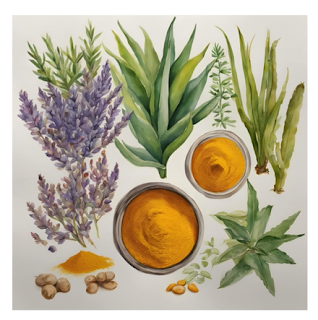Harnessing the Power of Medicinal Plants: Healing through Nature’s Pharmacy
In an age dominated by synthetic drugs and cutting-edge medical technology, we sometimes forget that nature has been our original pharmacy for thousands of years. Long before modern medicine, ancient civilizations across the world relied on medicinal plants to heal wounds, treat diseases, and enhance overall well-being. Today, as we search for more sustainable and natural ways to maintain health, the application of medicinal plants is regaining attention.
The Ancient Roots of Medicinal Plants
From the ancient Ayurvedic traditions of India to traditional Chinese medicine (TCM) and the herbal remedies of Indigenous peoples, medicinal plants have formed the backbone of healing systems for millennia. Plants like turmeric, ginger, aloe vera, and ginseng are more than just household names; they have played pivotal roles in healing practices for thousands of years. The reverence for nature’s healing power is evident across cultures, as each has its own treasure trove of medicinal herbs and plant-based treatments.
Science Meets Tradition: How Medicinal Plants Work
Recent scientific research has helped us understand the mechanisms behind the healing powers of plants. Many medicinal plants contain bioactive compounds—phytochemicals like flavonoids, alkaloids, and terpenes—that have therapeutic properties. These compounds can function as antioxidants, anti-inflammatories, antimicrobials, and even anti-cancer agents.
For example, the bark of the willow tree, once chewed by ancient Greeks to alleviate pain, contains salicin, a compound that led to the development of aspirin. Similarly, the anti-malarial drug artemisinin, derived from the sweet wormwood plant, remains a frontline treatment for malaria today.
Popular Medicinal Plants and Their Uses
Turmeric (Curcuma longa): Known for its bright yellow color, turmeric is widely used in Indian cuisine and Ayurvedic medicine. Its active compound, curcumin, has strong anti-inflammatory and antioxidant properties, making it effective in treating arthritis, promoting heart health, and even potentially fighting cancer.
Aloe Vera: Often called the "plant of immortality" by ancient Egyptians, aloe vera is renowned for its skin-soothing properties. It is a popular remedy for burns, wounds, and skin irritations. Rich in vitamins, enzymes, and minerals, aloe vera also supports digestive health and boosts the immune system.
Ginger (Zingiber officinale): Traditionally used to treat nausea and digestive issues, ginger has powerful anti-inflammatory and antioxidant properties. Studies suggest it may help reduce muscle pain, improve heart health, and even lower blood sugar levels.
Ashwagandha (Withania somnifera): This ancient Ayurvedic herb is classified as an adaptogen, helping the body manage stress. Ashwagandha is known for boosting energy, improving focus, and supporting mental health by reducing symptoms of anxiety and depression.
Echinacea: Widely used to prevent and treat colds and flu, echinacea stimulates the immune system. Research shows that it can reduce the duration and severity of respiratory infections.
Lavender: Famous for its calming scent, lavender is often used in aromatherapy to reduce anxiety and promote relaxation. Its essential oil is also applied topically to treat minor wounds and burns.
The Future of Medicinal Plant Research :
With the rise of antibiotic resistance and growing concerns over the side effects of synthetic drugs, the demand for plant-based medicine is rising. The global herbal medicine market is expected to continue growing as more people seek out natural alternatives. Modern scientific methods, such as biotechnology and nanotechnology, are unlocking new possibilities for the application of medicinal plants.
One exciting area of research is the use of plant-based compounds in drug discovery. Many pharmaceutical companies are now looking to nature to inspire new drug developments. In particular, medicinal plants are being studied for their potential in treating diseases like cancer, Alzheimer’s, and cardiovascular disorders.
Another promising trend is the integration of medicinal plants into functional foods and nutraceuticals. These are food products that provide health benefits beyond basic nutrition, such as turmeric lattes for inflammation or ginseng teas for energy. As consumers become more health-conscious, we are likely to see more products that combine the best of both nutrition and medicine.
Conclusion: A Return to Nature’s Wisdom :
The application of medicinal plants reminds us of the timeless wisdom held in nature. As we rediscover their benefits, medicinal plants offer a natural, sustainable, and accessible path to better health. Whether you are looking to boost immunity, reduce stress, or treat specific health conditions, the plant kingdom offers an incredible diversity of healing solutions. By blending ancient traditions with modern science, we can create a healthier future for generations to come.
The journey into medicinal plants is just beginning, and it’s an exciting path forward—one where the healing power of nature may once again take center stage in human health.
Author's Note: This blog is a celebration of the natural world and its powerful role in healing human lives. If you’re as fascinated by the intersection of nature and medicine as I am, dive deeper into the world of medicinal plants and explore how they can enhance your well-being.
- Get link
- X
- Other Apps





Comments